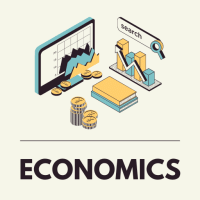Commerce Exam > Commerce Questions > Positive economic analysesa) Central problems...
Start Learning for Free
Positive economic analyses
- a)Central problems of an economy
- b)Cause and effect relationship
- c)Distribution of national product
- d)The problem of What to produce
Correct answer is option 'B'. Can you explain this answer?
| FREE This question is part of | Download PDF Attempt this Test |
Verified Answer
Positive economic analysesa) Central problems of an economyb) Cause an...
Positive economics is objective and fact based, statements do not have to be correct, but they must be able to be tested and proved or disproved.
Most Upvoted Answer
Positive economic analysesa) Central problems of an economyb) Cause an...
Positive Economic Analyses
Introduction:
Positive economic analysis refers to the study of economic issues and problems using objective, factual data and evidence. It focuses on understanding and explaining the cause and effect relationships in the economy, rather than making value judgments or prescribing policy solutions. In this context, the option 'B' - Cause and effect relationship - is the correct answer for positive economic analyses.
Cause and Effect Relationship:
Positive economic analysis aims to examine the cause and effect relationship between various economic variables or factors. It seeks to understand how changes in one variable can impact other variables in the economy. By studying these relationships, economists can gain insights into the functioning of the economy and make predictions about future economic outcomes.
Examples of Cause and Effect Relationships:
1. Interest Rates and Investment: Economists analyze how changes in interest rates affect investment decisions. Higher interest rates tend to discourage borrowing and investment, while lower interest rates can stimulate economic activity.
2. Inflation and Consumer Spending: Economists examine how inflation levels influence consumer spending patterns. Higher inflation erodes purchasing power, leading to reduced consumer spending, while lower inflation can boost consumer confidence and spending.
3. Government Spending and Economic Growth: Economists study the impact of government spending on economic growth. Increased government expenditure can stimulate aggregate demand and contribute to economic expansion, while reduced government spending can have the opposite effect.
Importance of Cause and Effect Relationship:
Understanding cause and effect relationships in the economy is crucial for making informed policy decisions and predicting the consequences of various economic events. Positive economic analysis provides a scientific framework to analyze and interpret economic data, enabling policymakers, businesses, and individuals to make informed choices. By identifying the cause and effect relationships, economists can provide valuable insights into the functioning of the economy and help in formulating effective economic policies.
Conclusion:
Positive economic analysis focuses on understanding the cause and effect relationships in the economy. By studying these relationships, economists can provide valuable insights into the functioning of the economy, make predictions about economic outcomes, and help in formulating effective economic policies. Understanding cause and effect relationships is essential for making informed decisions and addressing economic issues in a systematic and evidence-based manner.
Introduction:
Positive economic analysis refers to the study of economic issues and problems using objective, factual data and evidence. It focuses on understanding and explaining the cause and effect relationships in the economy, rather than making value judgments or prescribing policy solutions. In this context, the option 'B' - Cause and effect relationship - is the correct answer for positive economic analyses.
Cause and Effect Relationship:
Positive economic analysis aims to examine the cause and effect relationship between various economic variables or factors. It seeks to understand how changes in one variable can impact other variables in the economy. By studying these relationships, economists can gain insights into the functioning of the economy and make predictions about future economic outcomes.
Examples of Cause and Effect Relationships:
1. Interest Rates and Investment: Economists analyze how changes in interest rates affect investment decisions. Higher interest rates tend to discourage borrowing and investment, while lower interest rates can stimulate economic activity.
2. Inflation and Consumer Spending: Economists examine how inflation levels influence consumer spending patterns. Higher inflation erodes purchasing power, leading to reduced consumer spending, while lower inflation can boost consumer confidence and spending.
3. Government Spending and Economic Growth: Economists study the impact of government spending on economic growth. Increased government expenditure can stimulate aggregate demand and contribute to economic expansion, while reduced government spending can have the opposite effect.
Importance of Cause and Effect Relationship:
Understanding cause and effect relationships in the economy is crucial for making informed policy decisions and predicting the consequences of various economic events. Positive economic analysis provides a scientific framework to analyze and interpret economic data, enabling policymakers, businesses, and individuals to make informed choices. By identifying the cause and effect relationships, economists can provide valuable insights into the functioning of the economy and help in formulating effective economic policies.
Conclusion:
Positive economic analysis focuses on understanding the cause and effect relationships in the economy. By studying these relationships, economists can provide valuable insights into the functioning of the economy, make predictions about economic outcomes, and help in formulating effective economic policies. Understanding cause and effect relationships is essential for making informed decisions and addressing economic issues in a systematic and evidence-based manner.
Attention Commerce Students!
To make sure you are not studying endlessly, EduRev has designed Commerce study material, with Structured Courses, Videos, & Test Series. Plus get personalized analysis, doubt solving and improvement plans to achieve a great score in Commerce.

|
Explore Courses for Commerce exam
|

|
Similar Commerce Doubts
Positive economic analysesa) Central problems of an economyb) Cause and effect relationshipc) Distribution of national productd) The problem of What to produceCorrect answer is option 'B'. Can you explain this answer?
Question Description
Positive economic analysesa) Central problems of an economyb) Cause and effect relationshipc) Distribution of national productd) The problem of What to produceCorrect answer is option 'B'. Can you explain this answer? for Commerce 2024 is part of Commerce preparation. The Question and answers have been prepared according to the Commerce exam syllabus. Information about Positive economic analysesa) Central problems of an economyb) Cause and effect relationshipc) Distribution of national productd) The problem of What to produceCorrect answer is option 'B'. Can you explain this answer? covers all topics & solutions for Commerce 2024 Exam. Find important definitions, questions, meanings, examples, exercises and tests below for Positive economic analysesa) Central problems of an economyb) Cause and effect relationshipc) Distribution of national productd) The problem of What to produceCorrect answer is option 'B'. Can you explain this answer?.
Positive economic analysesa) Central problems of an economyb) Cause and effect relationshipc) Distribution of national productd) The problem of What to produceCorrect answer is option 'B'. Can you explain this answer? for Commerce 2024 is part of Commerce preparation. The Question and answers have been prepared according to the Commerce exam syllabus. Information about Positive economic analysesa) Central problems of an economyb) Cause and effect relationshipc) Distribution of national productd) The problem of What to produceCorrect answer is option 'B'. Can you explain this answer? covers all topics & solutions for Commerce 2024 Exam. Find important definitions, questions, meanings, examples, exercises and tests below for Positive economic analysesa) Central problems of an economyb) Cause and effect relationshipc) Distribution of national productd) The problem of What to produceCorrect answer is option 'B'. Can you explain this answer?.
Solutions for Positive economic analysesa) Central problems of an economyb) Cause and effect relationshipc) Distribution of national productd) The problem of What to produceCorrect answer is option 'B'. Can you explain this answer? in English & in Hindi are available as part of our courses for Commerce.
Download more important topics, notes, lectures and mock test series for Commerce Exam by signing up for free.
Here you can find the meaning of Positive economic analysesa) Central problems of an economyb) Cause and effect relationshipc) Distribution of national productd) The problem of What to produceCorrect answer is option 'B'. Can you explain this answer? defined & explained in the simplest way possible. Besides giving the explanation of
Positive economic analysesa) Central problems of an economyb) Cause and effect relationshipc) Distribution of national productd) The problem of What to produceCorrect answer is option 'B'. Can you explain this answer?, a detailed solution for Positive economic analysesa) Central problems of an economyb) Cause and effect relationshipc) Distribution of national productd) The problem of What to produceCorrect answer is option 'B'. Can you explain this answer? has been provided alongside types of Positive economic analysesa) Central problems of an economyb) Cause and effect relationshipc) Distribution of national productd) The problem of What to produceCorrect answer is option 'B'. Can you explain this answer? theory, EduRev gives you an
ample number of questions to practice Positive economic analysesa) Central problems of an economyb) Cause and effect relationshipc) Distribution of national productd) The problem of What to produceCorrect answer is option 'B'. Can you explain this answer? tests, examples and also practice Commerce tests.

|
Explore Courses for Commerce exam
|

|
Suggested Free Tests
Signup for Free!
Signup to see your scores go up within 7 days! Learn & Practice with 1000+ FREE Notes, Videos & Tests.
























